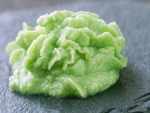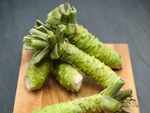Here's why wasabi is so good for you
Last updated on - Dec 22, 2019, 08:45 ISTShare fbsharetwsharepinshare
11/14May reduce fat cells


The growth and formation of fat cells could be reduced with the help of wasabi leaves as they contain powerful compounds. Animal studies have found a compound from wasabi leaves could stop the formation of fat cells by switching off the gene responsible for fat formation. One study also found wasabi leaf extract could help in weight management. While the findings look promising, more research is needed to fully investigate how wasabi can be used to tackle obesity.
Picture Courtesy: Google Images
12/14May contain anticancer properties


Multiple studies have been investigating wasabi for its anticancer properties. One study found Isothiocyanates (ITCs), compounds extracted from the wasabi root was able to prevent the formation of a chemical called acrylamide by 90 per cent. French fries and coffee are certain foods that contain acrylamide when cooked at high temperatures. Some researchers believe there is a strong link between some types of cancer and acrylamide.
Picture Courtesy: Google Images
13/14May contain anti-inflammatory properties


Inflammation occurs due to the body's response to toxins and infections. While it can be healthy in some ways, chronic inflammation can lead to severe health conditions. This is where wasabi can help as it is loaded with anti-inflammatory properties. Consuming a good amount of it regularly may help you to reduce your risk of heart disease, cancer and diabetes.
Picture Courtesy: Google Images
14/14May contain antibacterial properties


Isothiocyanates (ITCs) are compounds found in wasabi and the main reason it has so many health benefits. Researchers believe it is loaded with antibacterial properties. Some studies suggest it can tackle issues with food poisoning and digestive issues caused by viruses, bacteria, and parasites. Wasabi extract has been found to help tackle Escherichia coli O157: H7 due to its powerful antibacterial properties. It can also fight Staphylococcus aureus.
Picture Courtesy: Google Images



